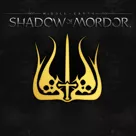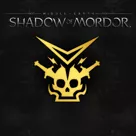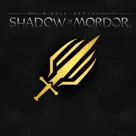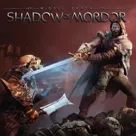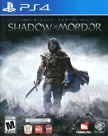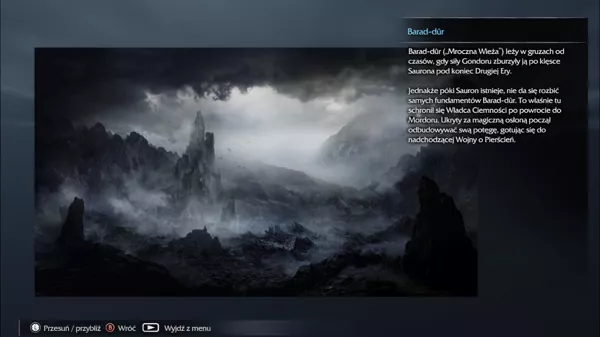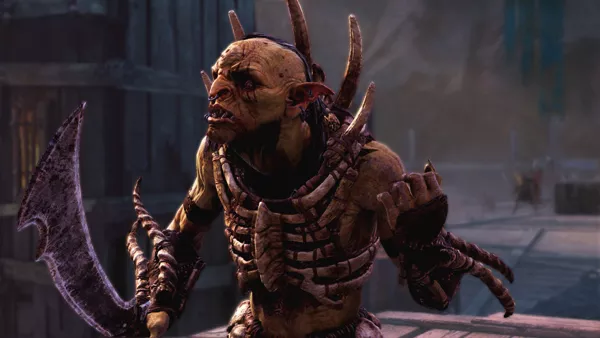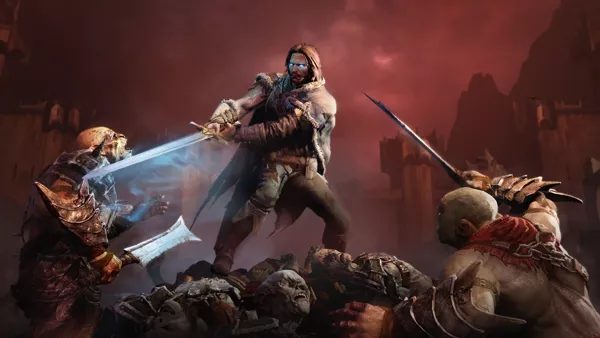Middle-earth: Shadow of Mordor
Description official descriptions
Middle-earth: Shadow of Mordor is an action role-playing game. It takes place between J.R.R. Tolkien's The Hobbit and The Lord of the Rings. You play as Talion, a ranger of Gondor guarding Black Gate. Talion and his family are killed by Sauron's armies led by Black Hand, but Talion is possessed by a mysterious wraith and is transferred to Mordor. His goal is avenging his family and revealing the identity of the wraith.
Shadow of Mordor is an open world game, where you have freedom to explore Mordor and completing side quests. The game combines elements of the Assassin's Creed series in terms of freely roaming the world and the Batman: Arkham series in terms of the combat system with complex combinations of offensive and defensive moves, and finishers.
The game uses a Nemesis system that remembers Talion's interactions with enemies, adapting their behavior at a later time. For example, a defeated orc might want to take revenge on Talion, humiliating him in a similar manner and wear the scars of the previous fight. The Nemesis system also generates the bodyguards, captains and war chiefs of Sauron's armies. They have their own hierarchy and become stronger as they manage to kill you, rising in the ranks. Captains who manage to beat Talion grow in strength and are promoted, and in time they become a serious challenge and a personal vendetta. Even though there are many fighting sequences, a large amount of stealth is encouraged to avoid overwhelming confrontations until many new weapons and abilities provide a wider range of tackling large groups. Captains can be killed permanently (usually by beheading them with a finisher), or you can choose to have them return at a later time through a regular kill. It is also possible to brand enemies which puts them under your influence. That way you can exercise control over them and have them fight by your side, but as it can be applied to all stages of the orc hierarchy it can also be used to influence the system from the inside. You can order a captain to kill his fellow captains and help determine their replacements.
The player can develop the abilities of Talion both as a ranger and as a wraith. Ranger abilities enhance stealth and make moving through the world unnoticed easier, while wraith abilities allow him to influence minds of enemies, allowing for example obtain information about captains and spreading unrest in enemy's ranks. The information for instance reveals immunity or weak points of specific captains, providing an advantage for a next fight.
The later released Xbox 360 and PS3 versions have reduced graphics. The Nemesis AI system has also been reduced significantly is depth and variety. Content-wise, it is largely identical.
Spellings
- Средиземье: Тени Мордора - Russian spelling
- 中つ国:モルドールの影 - Japanese spelling
Groups +
- 3D Engine: LithTech Jupiter EX
- Fantasy creatures: Orcs
- Game feature: Free camera photo mode
- Gameplay feature: Beast riding & beast attacking
- Gameplay feature: Controllable pet companions
- Gameplay feature: Horse riding
- Gameplay feature: Possession
- Gameplay feature: Time manipulation
- Inspiration: Author - J.R.R. Tolkien
- Japanese PlayStation 4 games with full English support
- Middle-earth: Shadow of Mordor series
- Middleware: Bink Video
- Physics Engine: Havok
- Sound Engine: Wwise
- Symphonic Orchestra: Northwest Sinfonia
Screenshots
Promos
Videos
Add Trailer or Gameplay Video +1 point
See any errors or missing info for this game?
You can submit a correction, contribute trivia, add to a game group, add a related site or alternate title.
Credits (Windows version)
1,113 People (1,031 developers, 82 thanks) · View all
| Director of Design | |
| Art Director | |
| Content Director | |
| Engineering Manager | |
| Executive Producer | |
| Senior Producers | |
| Art Development Director | |
| Producers | |
| Associate Producers | |
| Production Coordinator | |
| Lead Designer, Gameplay | |
| Lead Designer, Systems | |
| Staff Designers | |
| Senior Designer, Missions | |
| Senior Designers | |
| [ full credits ] | |
Reviews
Critics
Average score: 85% (based on 165 ratings)
Players
Average score: 3.8 out of 5 (based on 52 ratings with 2 reviews)
The Good
The sword combat is very well done and easy to understand. You start with your basic moves, like swinging, parrying, and executing; but you eventually level up and upgrade your character with moves that make combat even more fun and interesting.
Playing the game stealthy is also really easy, yet satisfying. Stealth not too complicated. You can climb walls, silently execute enemies, etc. The simplicity of it isn't bad, however. Personally, I'm not to good at stealth in video games, but this game makes it understandable and fun, even for me.
The story and presentation are also well executed. I went into this game not at all knowing much about Middle Earth lore, but I was still interested the whole way, even if it's considered non-canon. There are also collectible throughout the game that tell you about other people's stories.
There is a unique system that involves the Uruks (the main enemies of the game). In summary, there is a rank system. Some of the enemies will be captains, body guards, war chiefs, etc. These ranks will constantly change throughout the game in many ways; by you killing one of them, by you interfering with their business through side missions, by random in-game events that just happen off screen, or by them killing you. Around halfway through the game, you can start branding enemies, which means making them fight for you. This is my favorite part of the game since you can brand enemies to the point where all of the war chiefs (the most powerful rank for Uruks), are on your side. The ranking system is very different to what I've seen in the games I've played, I might recommend the game just for that.
The Bad
Sometimes the side missions just feel repetitive. The ones you need to do to 100% the game, at least. For example, there are some where you have to rescue slaves by scouring an area and releasing them. Although you can approach these in different ways, the 2 maps in the game are pretty small, so you would have to be in the same place to do several missions, which sometimes feels tedious.
This one is more of a nitpick. There are a few beasts and such that-- from what I found-- aren't even part of Middle-Earth lore. I get that the game is considered non-canon, but when I found out that these beasts weren't even part of Middle-Earth, it felt kind of off to me.
There are some ridiculous dlc, and by some, I mean a lot. Some of them are actual story expansions, but some of them add in powerful upgrades to your weapons more Uruk warbands, and overall many things that shouldv'e just been in the game. I suppose it's more WB's fault, they always add stupid monetary crap to their games.
The Bottom Line
It's overall a really good game. The combat and stealth are solid, the ranking system is a fun feature, and the story is interesting enough to keep you invested. It even got me into Middle Earth lore.
Windows · by sinisterhippo (23) · 2019
A great action game based on the Batman Arkham series engine
The Good
The game is extremely pretty. The textures look great, the models are nicely detailed and the animations and special effects are very well done. The only blemish in the game's looks is in the anti-aliasing: the engine only supports FXAA, barely effective in hiding the jagged lines. One of the options offered is to do anti-aliasing by blur, but that just makes things worse.
The menus and UI are all well designed and easy and intuitive to use, with the exception of the rune screen which requires a lot of back and forth to compare equipped and available equipment.
The gameplay revolves around a mix of the style seen in the Batman Arkham series combat and the exploration and free running featured in Assassin's Creed. The combat is equally as flashy as Batman's, but more dynamic: a lot more enemies will get involved in the battle at the same time and tend to wait around much less than what the Joker's minions did. Featured as persistent progression mechanics are two different skills trees, with three types of points that can be earned to unlocked them. The main tree's abilities are unlocked through standard experience points, earned mainly by killing enemies. The tiers in this tree can only be unlocked by power points, which come from completing tasks that directly interfere with Sauron's captains. Lastly, the equipment skills are tied to Mirian, received exclusively through collectibles and side missions. Impressively most of these unlockable skills are interesting and I've looked forward to every single level up. In the matter of abilities, and keeping up the inevitable comparisons with Batman, I've found that all the active attacks that I've unlocked were more than useful, while in the Dark Knight's game I've rarely used several of those. Talion has at his disposal three weapons with which to fight Uruks and the creatures of Mordor: a sword, which delivers the standard attacks; a bow, wielded by the wraith; his son's broken sword, which he uses as a dagger, to deliver stealth attacks. The big difference that sets apart Middle-earth: Shadow of Mordor from other games in the genre is the Nemesis system. In both regions there are 20 slots that can be occupied by special Uruks called captains. Uruks who become captains gain a name, a personality and special abilities. If captains are left alone they will gain in power as time goes by or when they successfully complete special events. The Nemesis system creates a very fun depth to the free-form part of the game, and makes it so even going around just fighting random captains takes a long time to become repetitive. The explorable areas are smaller than what we're used to in games of the same genre, but this isn't a bad thing at all: getting side-tracked in this game is easy enough as it is, so not having to travel an empty landscape for a long time helps keeping everything interesting. Lots of collectibles and extra activities are scattered across the landscape: Ithildin, artifacts, slaves to free and challenges that focus on one of the weapons. The artifacts in particular are very interesting because they contain additional flavour to the secondary characters. The weapon challenges are a mixed bag of good and bad: some are fun, others are unimaginative or poorly designed.
Between all the optional missions and items and the Nemesis system the game offers a great longevity. It's very easy to get sidetracked, but even the most simple fighting takes a long time to become repetitive.
Great contextual music is featured all throughout the game. The voice acting for the Uruks is of exceptional quality, while the humans' isn't as remarkable.
The technical aspects of the PC version are fantastic. I've already said how good the game looks, but the price in framerate is very small even with a setup that's mid-range. The loading times when fast travelling are extremely short, and the initial loading is not excessive either.
The mouse controls feel quick and responsive and the keyboard bindings are very satisfying, like they were in the Batman series: there are no awkward combinations of keys to hit to perform the special abilities as they all can be mapped on single keys.
The Bad
For some mystifying reason the developers chose to use pre-rendered videos for all the story cutscenes instead of the game engine. As a result, they all look badly compressed and with washed out colours, and in general it seems that they were even recorded with inferior textures and effects compared to those available on the actual game.
The HUD is very clean and functional, but it is constantly ruined by ugly floating markers that can't be removed. In particular the ones that point to targets to kill can be extremely inconvenient because they will cover their heads, making it potentially hard to get headshots from a distance. The only other small problem I had with the HUD was that the North marker on the minimap is constantly hidden by the destination markers, forcing the players to continually open the map if the want to orientate themselves.
The sound effects are largely unsatisfying and the general sound design didn't impress me at all: most blows and special effects never feel as “meaty” as they should've. There are also instances of bad volume levels balance during interactive cutscenes, most noticeably near the start of the game.
Some of the issues that affected the Batman Arkham series are still present. In particular the problems with choosing the target for the next attack are completely unchanged, and it's often possible to lose good combos because of it. It's not felt as heavily as Batman, however, because of the higher numbers of enemies that Talion faces and the better active abilities that enable him to link attacks together more efficiently. The free running mechanics use an extremely simplified sticky system that requires minimal input, but can often feel limiting, because whenever he's nearby surfaces that he can grab Talion will disregard the direction he's given and jump for them. Small movements and adjustments in those situations are impossible. The variety of regular Uruks is very limited and the presence of a few occasional animals doesn't really fill that hole. It doesn't help that they all have the same vulnerability, being vaulted over, and thus there's very little strategy to be applied in combat based on the types of enemy. The short introductions that the captains do when they enter combat with Talion, part of the Nemesis system to help the players familiarise themselves with the enemy, are very nice at first, but after tens of times I just started wishing I could skip them. Moreover, their forced interruption can cause a lot of problems if they happen while fighting against other Uruks, because they'll also cancel out the current combo. The maximum power level that captains and warchiefs can reach is 20. This is a rather disappointing limit, because by the end of the game even those of that level will pose barely any challenge.
I found the story pretty uninteresting, but that didn't affect my enjoyment of the game in any way: it's just the device that makes it all move along. The only real problem is that it ties badly with the gameplay aspects, especially by completely disregarding the fact that Talion can effectively face as many Uruks as Sauron would like to send at him.
The Bottom Line
Shadow of Mordor is a brilliant action game, with fun combat and an ingenious mechanic in the Nemesis system that keeps what would normally be repetitive tasks fresh for a long time. It is very well balanced in both difficulty and length. Great looking graphics and excellent keyboard and mouse controls top up one of the best PC ports I've seen in a long time.
Windows · by BeamingLizard (15) · 2015
Trivia
Canonical inconsistencies
Even though the game was created in collaboration with Peter Jackson and Middle-earth Enterprises, the story is not canonical. According to Tolkien, the only person in Middle-earth who returned to life was Beren, resurrected thanks to Lúthien. In addition, guards abandoned watch on the Black Gate approx. 1300 years prior to the game’s start date.
Awards
- EGM
- 2014 - ranked 3 (Top 25 of 2014)
- The Game Awards
- 2014 — Game of the Year — Nominated
- 2014 — Best Performance: Troy Baker as Talion — Nominated
- 2014 — Best Action/Adventure — Won
Analytics
Related Sites +
-
TrueAchievements achievement guide
The TrueAchievements achievement guide for Middle-earth: Shadow of Mordor
Identifiers +
Contribute
Are you familiar with this game? Help document and preserve this entry in video game history! If your contribution is approved, you will earn points and be credited as a contributor.
Contributors to this Entry
Game added by Pottero.
Macintosh, Xbox 360, PlayStation 3 added by Sciere. Linux added by LepricahnsGold.
Additional contributors: chirinea, Alaka, jaXen, Havoc Crow, Stratege, Kennyannydenny.
Game added October 3, 2014. Last modified March 31, 2025.








